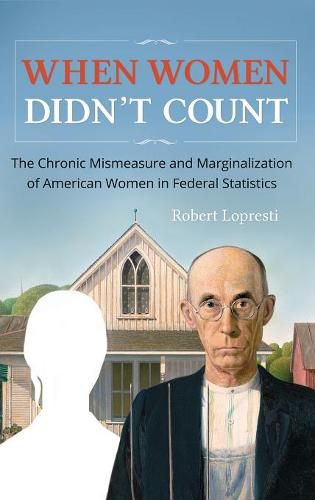Readings Newsletter
Become a Readings Member to make your shopping experience even easier.
Sign in or sign up for free!
You’re not far away from qualifying for FREE standard shipping within Australia
You’ve qualified for FREE standard shipping within Australia
The cart is loading…






Erroneous government-generated data is more problematic than it would appear. This book demonstrates how women’s history has consistently been hidden and distorted by 200 years of official government statistics.
Much of women’s history has been hidden and filtered through unrealistic expectations and assumptions. Because U.S. government data about women’s lives and occupations has been significantly inaccurate, these misrepresentations in statistical information have shaped the reality of women’s lives. They also affect men and society as a whole: these numbers influence our investments, our property values, our representation in Congress, and even how we see our place in society. This book documents how U.S. federal government statistics have served to reveal and conceal facts about women in the United States. It reaches back to the late 1800s, when the U.S. Census Bureau first listed women’s occupations, and forward to the present, when the U.S. government relies on nonprofit groups for statistics on abortion.
Objective and accurate, When Women Didn’t Count isn’t focused on numbers and census results as much as on recognizing problems in data, exposing the hidden facets of government data, and using critical thinking when considering all seemingly authoritative sources. Readers will contemplate how the government decided that a farmer’s wife could be a farmer, how the ongoing battle over abortion has been reflected in the numbers the government is allowed to keep and publish, the consequences of the Census Bureau correcting reports of women in unusual occupations in 1920, and why the official count of women-owned businesses dropped 20 percent in 1997.
Provides new ways of thinking about the history of women in the United States
Examines the systems used to gather and publish federal statistics, identifying their strengths, weaknesses, and biases
Demonstrates the need for applying critical thinking skills even when examining assumedly trustworthy statistics from official sources
Reveals how details of women’s lives in the United States have been erased or disguised in data that is considered authoritative and reliable
$9.00 standard shipping within Australia
FREE standard shipping within Australia for orders over $100.00
Express & International shipping calculated at checkout
Erroneous government-generated data is more problematic than it would appear. This book demonstrates how women’s history has consistently been hidden and distorted by 200 years of official government statistics.
Much of women’s history has been hidden and filtered through unrealistic expectations and assumptions. Because U.S. government data about women’s lives and occupations has been significantly inaccurate, these misrepresentations in statistical information have shaped the reality of women’s lives. They also affect men and society as a whole: these numbers influence our investments, our property values, our representation in Congress, and even how we see our place in society. This book documents how U.S. federal government statistics have served to reveal and conceal facts about women in the United States. It reaches back to the late 1800s, when the U.S. Census Bureau first listed women’s occupations, and forward to the present, when the U.S. government relies on nonprofit groups for statistics on abortion.
Objective and accurate, When Women Didn’t Count isn’t focused on numbers and census results as much as on recognizing problems in data, exposing the hidden facets of government data, and using critical thinking when considering all seemingly authoritative sources. Readers will contemplate how the government decided that a farmer’s wife could be a farmer, how the ongoing battle over abortion has been reflected in the numbers the government is allowed to keep and publish, the consequences of the Census Bureau correcting reports of women in unusual occupations in 1920, and why the official count of women-owned businesses dropped 20 percent in 1997.
Provides new ways of thinking about the history of women in the United States
Examines the systems used to gather and publish federal statistics, identifying their strengths, weaknesses, and biases
Demonstrates the need for applying critical thinking skills even when examining assumedly trustworthy statistics from official sources
Reveals how details of women’s lives in the United States have been erased or disguised in data that is considered authoritative and reliable